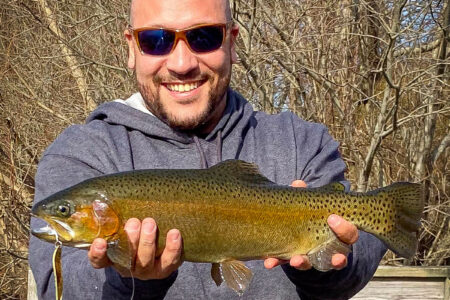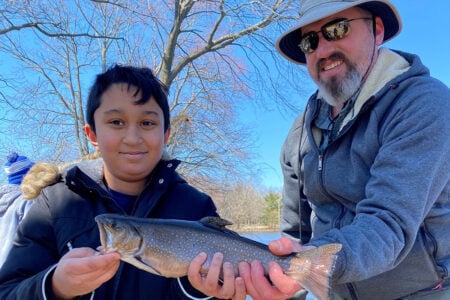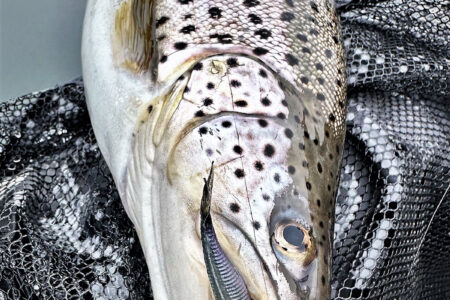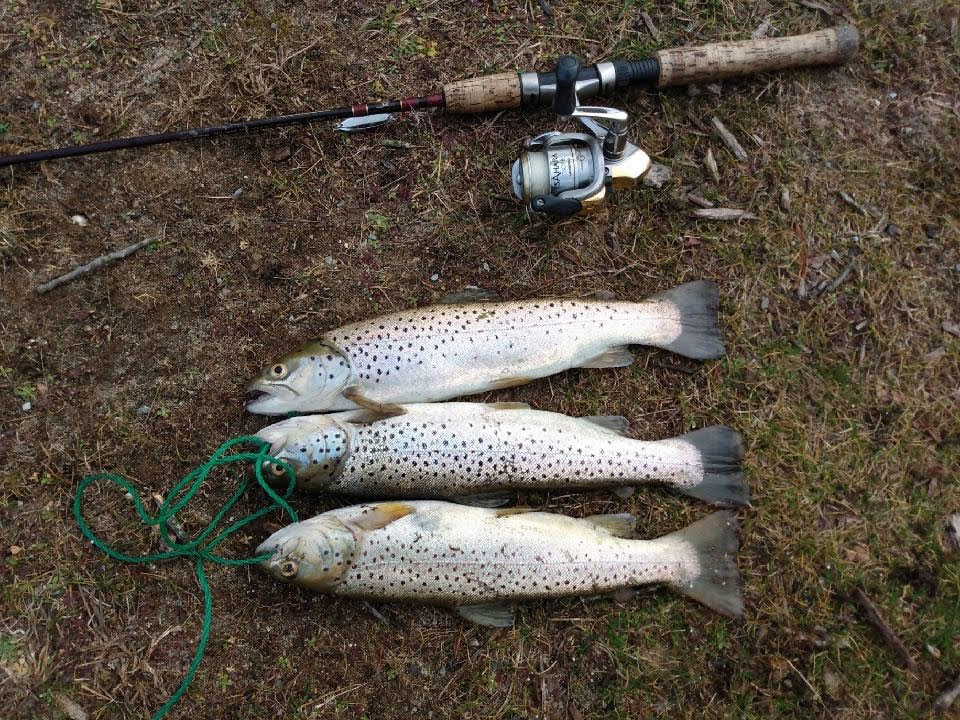
Using light trout tackle in combination with small spoons for winter success.
It was a rather warm winter afternoon as I waded out into upper Yaphank Lake in search of some trout. Being able to get out and shake the cobwebs off was high on the priority list after a long spell of cold, windy weather. The lake I was fishing received a generous stocking of brown and rainbow trout last spring and again in late fall, including some nice browns measuring 15 inches. I clipped on a 1/8-ounce gold Kastmaster and started to fan cast out to a drop-off that was off a point. Letting it sink and retrieving it slowly was key this day, and after a dozen casts, I was tight to a beautifully-colored brown trout that gave a respectable fight on the ultralight outfit. In the next hour, after tempting three more fish, my wintertime blues were gone, and my sanity was restored for the time being!
Late winter and early spring, trout fishing in the many lakes and ponds across Long Island is something that I always look forward to, and the opportunities are numerous across Nassau and Suffolk counties. The fall stocking program by the DEC really ensures some good action over the winter, prior to the spring stockings. There are many varied methods to target trout, and everyone has their favorite, but the one I really enjoy this time of year is the use of ultralight spinning tackle paired with one of the many small spoons available to anglers. It’s a simple approach and gives me the ability to cover a lot of water easily and also handle breezy conditions, which, in these months, can be often.
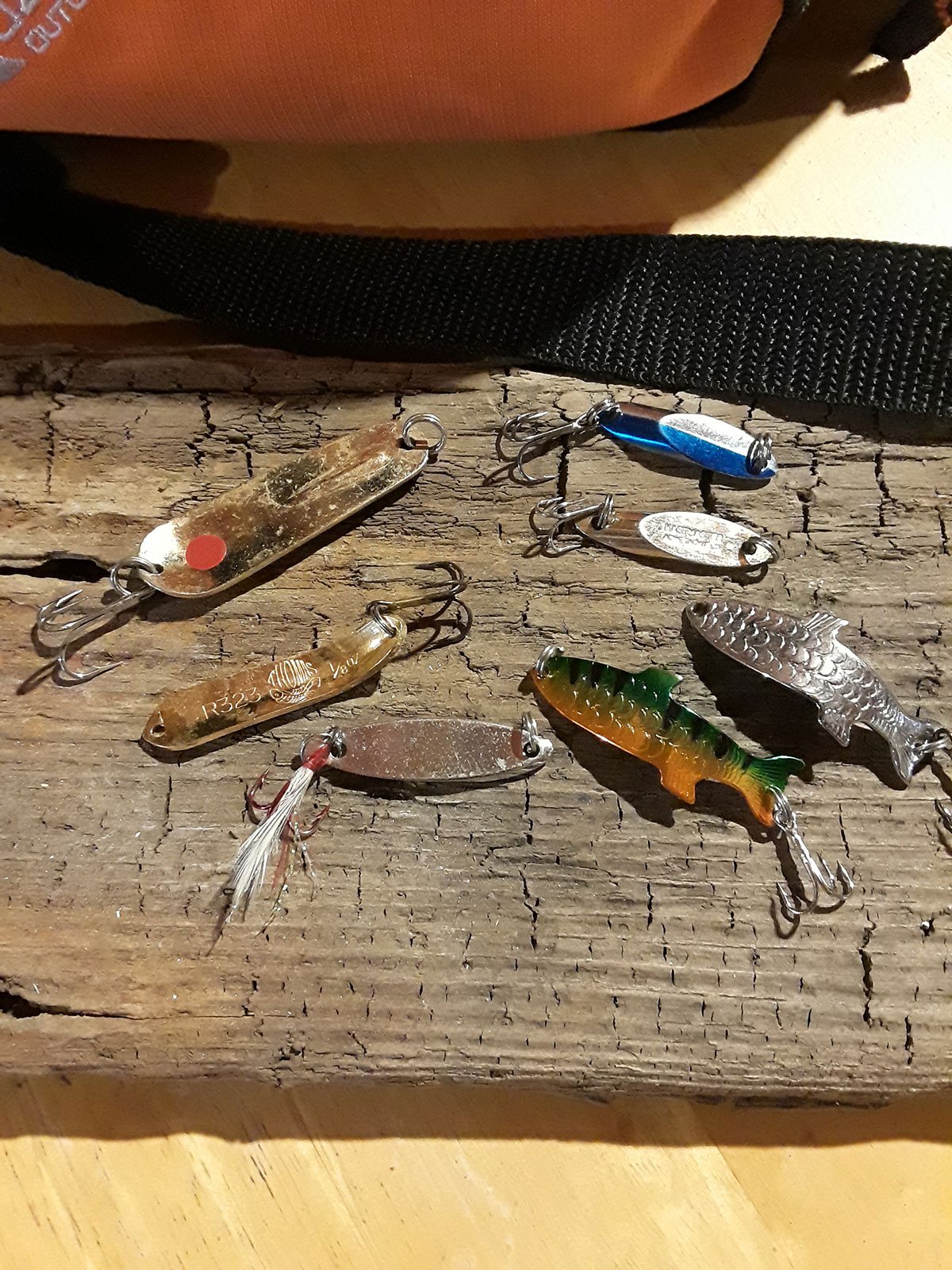
Trout Tackle
Choosing rods in the 6 to 7-foot range that are categorized as ultralight are the way to go. It makes it a lot of fun and gives you the ability to feel the spoon working the way it is intended to – which is a nice wobble that drives the trout crazy! For line, I personally settled on 4-pound monofilament as the line of choice, but some anglers go down to 2-pound test mono or braid. Reels like the Pflueger President SP 20 match up nicely with the ultralight rods. In keeping with the simple concept, I tie it directly to a small snap for easy lure change. If using a braid, you would add a leader of mono or fluorocarbon with a Uni-to-Uni Knot or a tiny swivel, but I feel the less hardware, the better.
Spoon Fed!
Spoons I found to be very effective are Thomas and Kastmasters. Phoebe and Daredevils in sizes ranging from 1/16 to 1/8 ounce. They cast very well and can be worked at any depth by varying your retrieve speed, lowering the rod horizontally to the water, and letting the lure drop at different rates prior to starting the retrieve. The colors that seem to work best for me are gold, silver, blue/silver, and firetiger perch. If you feel creative, try tying on a little bit of flash to the hook. It gets the attention sometimes over unadorned ones. Lakes and ponds that have a lot of small yellow perch provide good forage for the bigger browns, which are very aggressive feeders. I have noticed in these bodies of water that the trout took a liking to the perch pattern spoons. Having a good selection of colors and sizes will often pay off because of the differing water clarity and wind conditions on a given day.
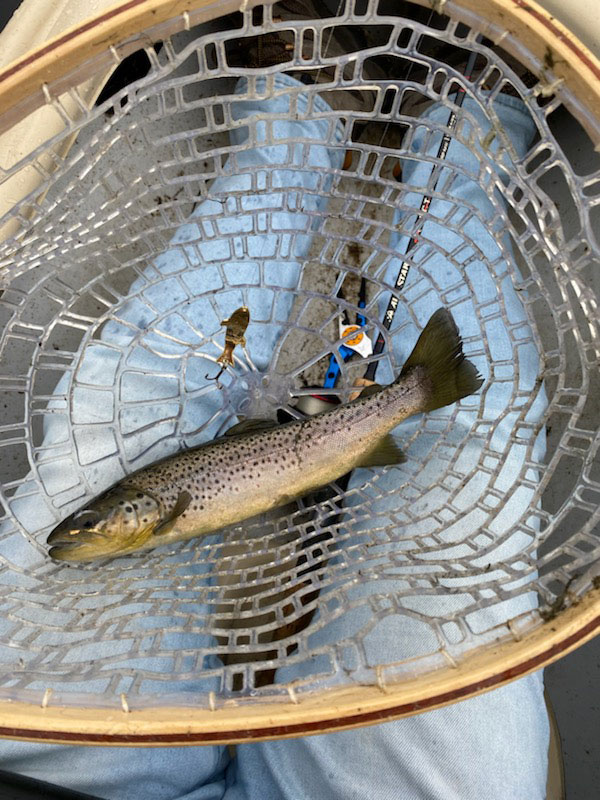
Tactical Moves
When out on the lakes and ponds, whether from a boat or from shore, I have found that moving around is key to staying on the trout. They can often school up in good numbers. There have been many instances for me when shifting only a short distance resulted in a flurry of activity. In the colder weather, trout might be hanging around springs that feed some of these lakes and move off for a while to feed in other areas, so staying mobile helps to locate them.
Working the spoons with a straight, slow retrieve is what I always start off with, and then I experiment with imparting some varied action, such as a stop and go or a slight jigging action, until I find what the trout are responding to that particular day. Just as important is the size of the spoon. I’ll change it up because some days, a small one gets the most attention over the larger one, and vice versa.
Now, if I had to pick the best time of day to go in search of late winter and early spring trout, I would get out in mid-afternoon to dark. This timeframe has produced some of the better action, and it could be that the lake is more active after some sun has warmed it a bit. Baitfish and insects are more likely to be out and about, sparking the trout to feed. It’s also more tolerable for anglers like me, who feel the cold more than the trout!
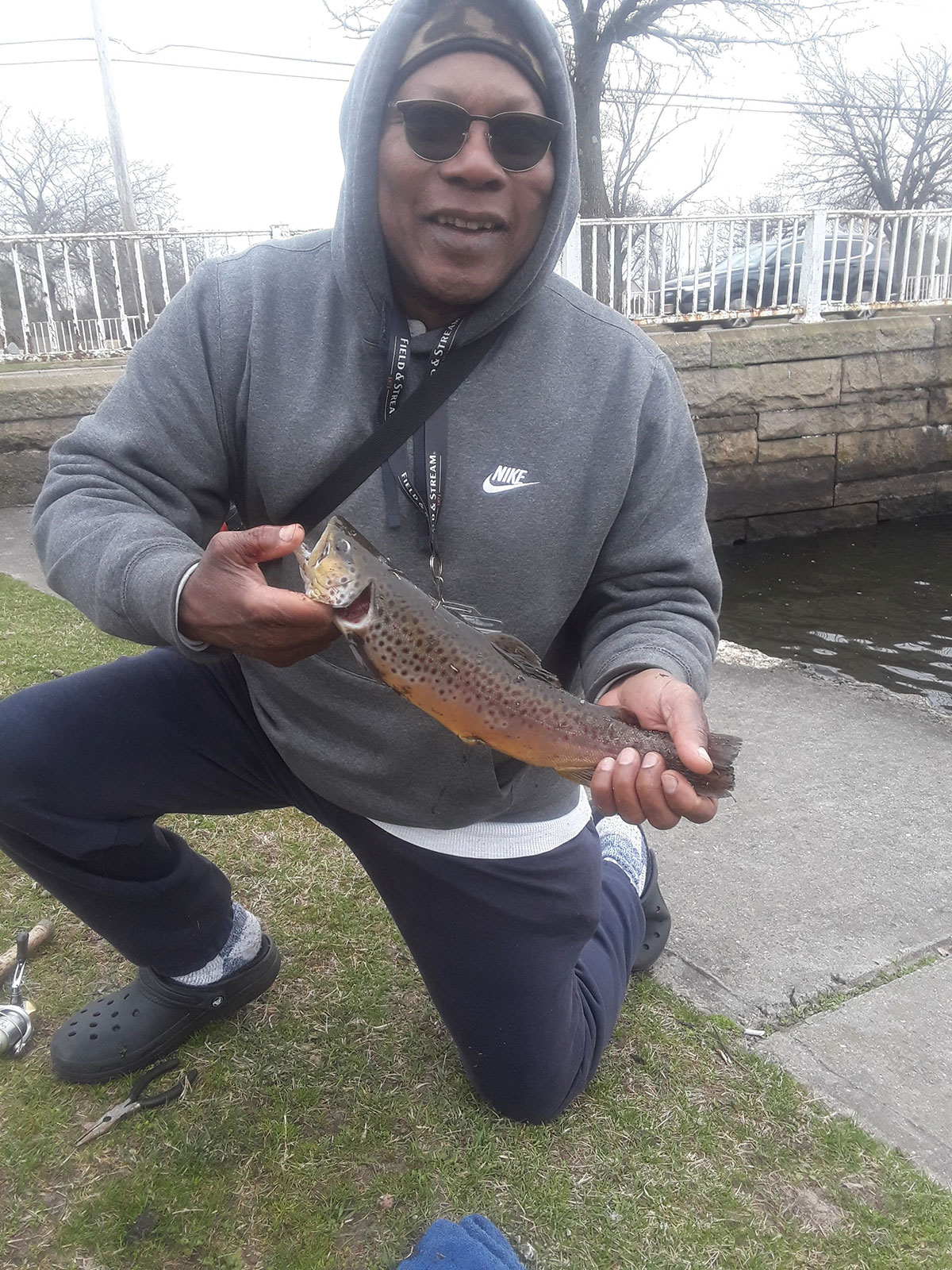
Lakes And Ponds To Try
| GET YOUR NY LICENSE OR REGISTRY |
| Whether you decide to fish a Long Island lake or river, you will need to be in compliance with the law to do so. For more information on how to obtain a license or registry for New York State, visit https://dec.ny.gov/regulatory/permits-licenses/sporting-and-use/sporting/fishing-license. |
Both Nassau and Suffolk counties host some nice lakes and ponds to choose from. They offer good shore access, and most allow kayaks or small boats. They are stocked regularly by the DEC, ensuring action throughout the year. Many of the lakes that have outlets to the South Shore bays have had fish passages or “ladders” installed that facilitate the migration of the alewives and blueback herring and, in turn, can let trout migrate to become “salters,” as they are called. This could add a new element to fishing these waters, as these trout can get quite large. Check your local regulations and stocking list for the amount and species of trout that are stocked. The season is open all year in most of the lakes.
NASSAU COUNTY WATERS
Oyster Bay Mill pond – Oyster Bay
Upper Twin pond – Hempstead
Massapequa Reservoir – Oyster Bay
SUFFOLK COUNTY WATERS
Twin Pond – Huntington
Belmont Lake – Babylon
Southards Pond – Babylon
Argyle Lake – Babylon
Canaan Lake -North Patchogue
Swan Lake (east lake) – Patchogue
West Lake – Patchogue
Hards Lake – Brookhaven (Southaven Park)
Kahlers Pond – East Moriches
Laurel Lake – Mattituck
Some of these waters that have the potential to harbor a larger holdover fish are Massapequa Reservoir, Laurel Lake, and Hards Lake because of their water depth and quality. The late winter and early spring are great times to get out on any of the stocked lakes that dot the island. The fish are there waiting and are hungry. Dress warm, grab a light rod and some spoons, and give it a try. Don’t forget to have your New York freshwater license. The added optional bonus aside from a bend in the rod is a nice trout dinner that is absolutely delicious.

